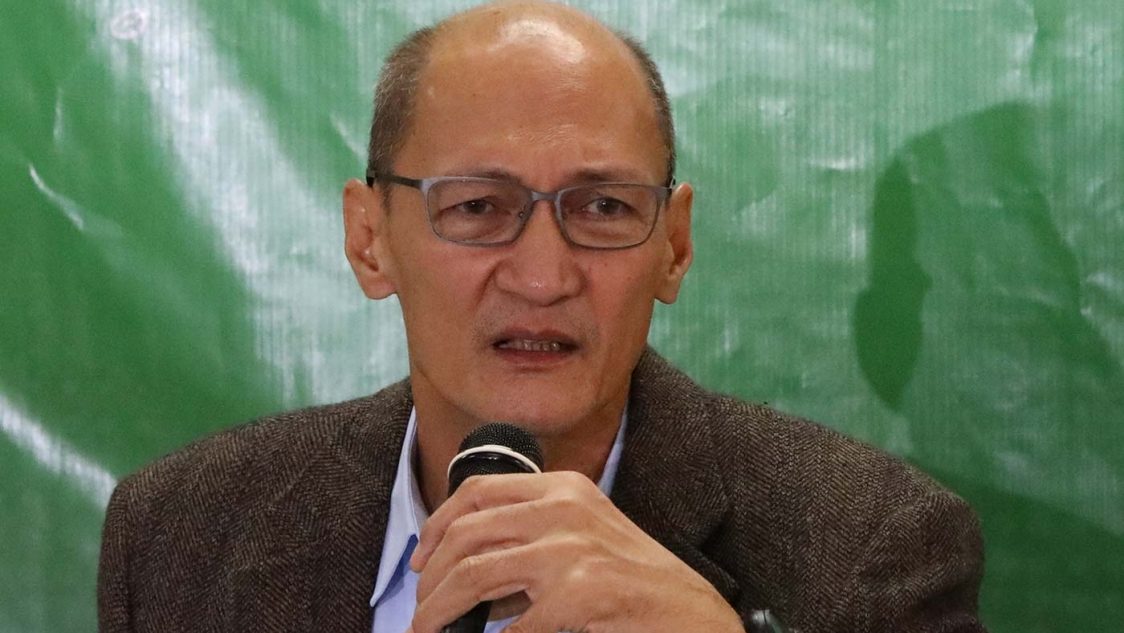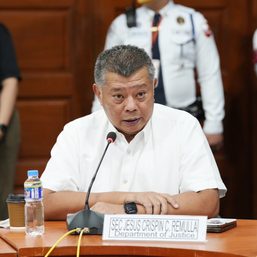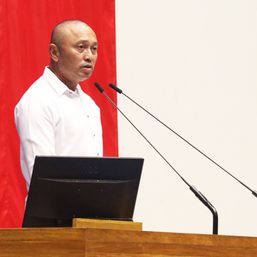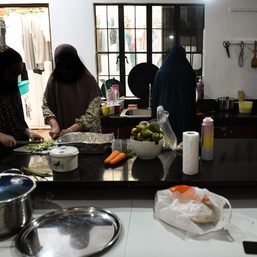SUMMARY
This is AI generated summarization, which may have errors. For context, always refer to the full article.

The Department of Justice (DOJ) task force has accused resigned Philippine Health Insurance Corporation (PhilHealth) CEO and president Ricardo Morales of conspiring with other executives to favor clinic and hospitals under the now-controversial Interim Reimbursement Mechanism (IRM).
A number of these hospitals and clinics were in Bicol and Eastern Visayas, while the total misappropriation nationwide was at P2.7 billion.
“PCEO Morales, Senior Vice President [Renato] Limsiaco, and Area Vice President for Visayas [Walter] Bacareza conspired and confederated in pre-determining the Healthcare Institutions (HCIs) particularly in Regions 8 and 5 to outshine other HCIs in the grant of IRM funds, thus giving HCI in the said regions unwarranted benefits, advantage or preference,” the National Bureau of Investigation (NBI) said in its 30-page complaint filed before the Office of the Ombudsman on October 2.
The NBI complaint was the result of the two-month probe of the DOJ-led inter-agency task force created by President Rodrigo Duterte, who appointed former military general Morales to Philhealth.
Morales and 8 other Philhealth officials, including Limsiaco, were sued for graft, malversation, tax violations. Bacareza was not among the 9 named in the complaint.
Justice Secretary Menardo Guevarra said “more names may be included and more complaints will be filed in the coming days.”
The complaint details the extent of a plot allegedly designed to release IRM funds to favored clinics and hospitals, with the task force concluding that the officials “consented to the misappropriation of IRM funds totaling P2,709,313,842.”
Senator Panfilo Lacson said over Radio DZBB that Senate President Vicente Sotto III has “inside information” that there are evidence that will pin down Health Secretary Francisco Duque III, who is chairman of the PhilHealth board, and SVP for the legal sector Rodolfo del Rosario Jr.
“We will be glad to discuss these pieces of evidence with senators Sotto and Lacson,” said Guevarra. “We have just begun, we are still uncovering and gathering more evidence, so who knows if in the future some other big fish may be caught? That is a possibility.”
Against state audit rules
IRM was a system of giving hospitals and clinics cash to use during “fortuitous events,” like a pandemic, because PhilHealth owed them huge sums in perennially delayed reimbursements.
IRM was also used as a form of cash advance.
The DOJ task force said this was illegal, “considering that it goes against the rules of the Commission on Audit,” specifically COA Circular No. 97-002, which covers rules on cash advances.
The circular allows cash advance only to disbursing officers and special cash advance to heads of agency for use in salaries, travels, and other expenses incurred by officials. “Cash advances granted by Philhealth to the HCIs do not fall under any of these types,” the task force said.
When it implemented the cash advance system, Philhealth followed a 90-day historical claim process, where the HCI’s average daily claim from the previous year was multiplied by 90 to get an estimate of the amount it would need for 3 months.
Saying that the 90-day claim system “does not fit the COVID-19 pandemic,” the task force said that Morales, Limsiaco, and Bacareza “calculatedly pre-determined their favored HCIs, especially in Region 8 where they derived 2% minimum cash rebates.”
“In the statement of Colonel Etrobal Laborte, he mentioned that PCEO Morales, SVP Limsiaco, and AVP Bacareza deliberately adopted the 90-day historical benefit claim as a basis in computing the amount to be granted to HCIs,” said the complaint, citing Morales’ former head executive assistant.
Senate hearings revealed the Philhealth circular that operationalized the IRM in the context of the pandemic only became effective on June 11, and yet, as early as June 9, Philhealth had already released more than P14 billion.
Hatched and designed?
Morales signed the circular on March 20, but according to the task force, the resigned CEO, Limsiaco, and Bacareza “hatched a blueprint for letter of intents and memorandum of agreements as templates for the HCIs.”
“PCEO Morales approved the draft of the IRM policy, which they also designed, all in the afternoon of March 13, 2020, a Friday, to be intended initially [for] Regions 8 and 5, where most of their favored HCIs are situated,” said the complaint.
The task force said, that same evening, Limsiaco and Bacareza flew to Leyte, “where they reached out to their favored HCIs and advised them of the availability of the IRM funds and gave them the templates for the letters of intent and memorandum of agreement.”
Applications “piled up” in Morales’ office on March 16, said the complaint.
Senators had also pointed out that, while the IRM was implemented in the context of the pandemic, many beneficiaries were dialysis and birth centers, and not involved in the treatment of coronavirus patients.
“On March 23 and 25, 2020, Philhealth released the IRM funds of the HCIs from Regions 8 and 5, where very insignificant cases or even up to no case at all were recorded for COVID-19, and even before the ratification by the board on the policy on March 30, 2020,” said the complaint. – Rappler.com
Add a comment
How does this make you feel?





There are no comments yet. Add your comment to start the conversation.